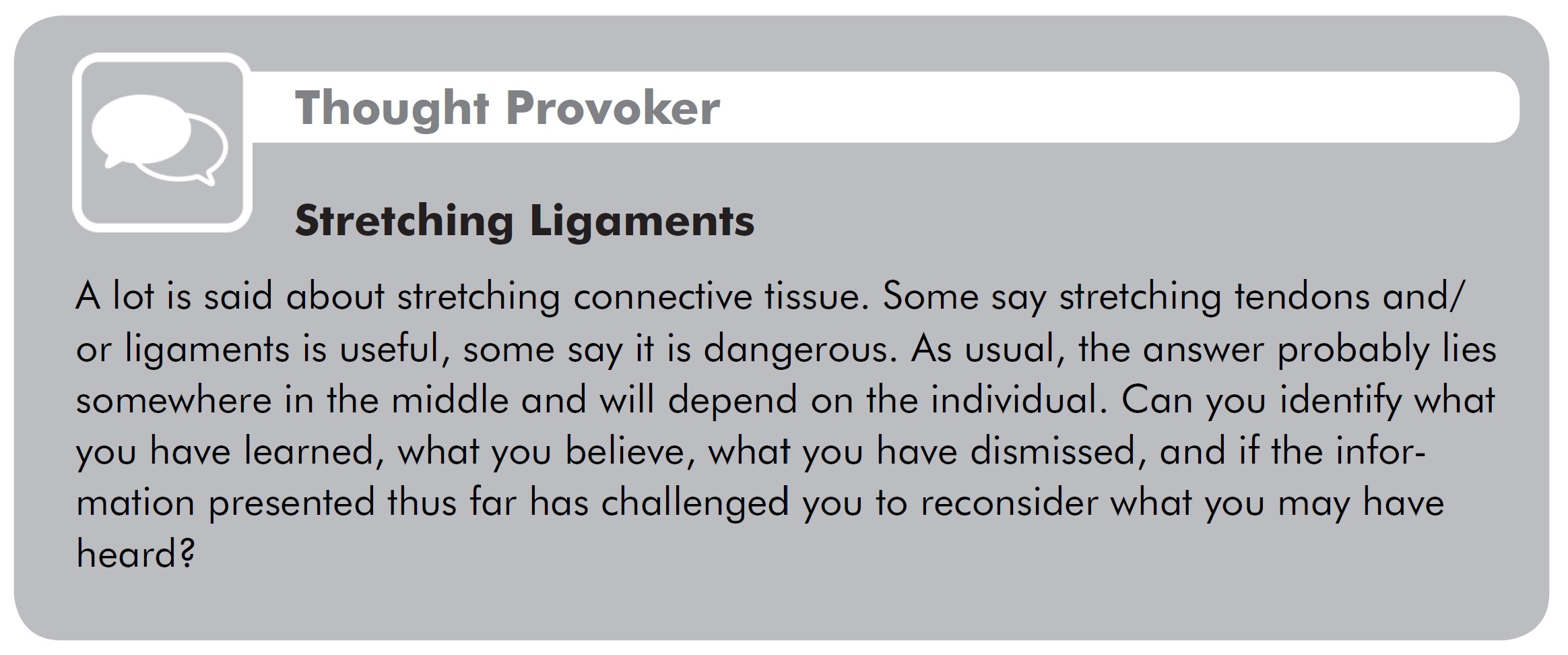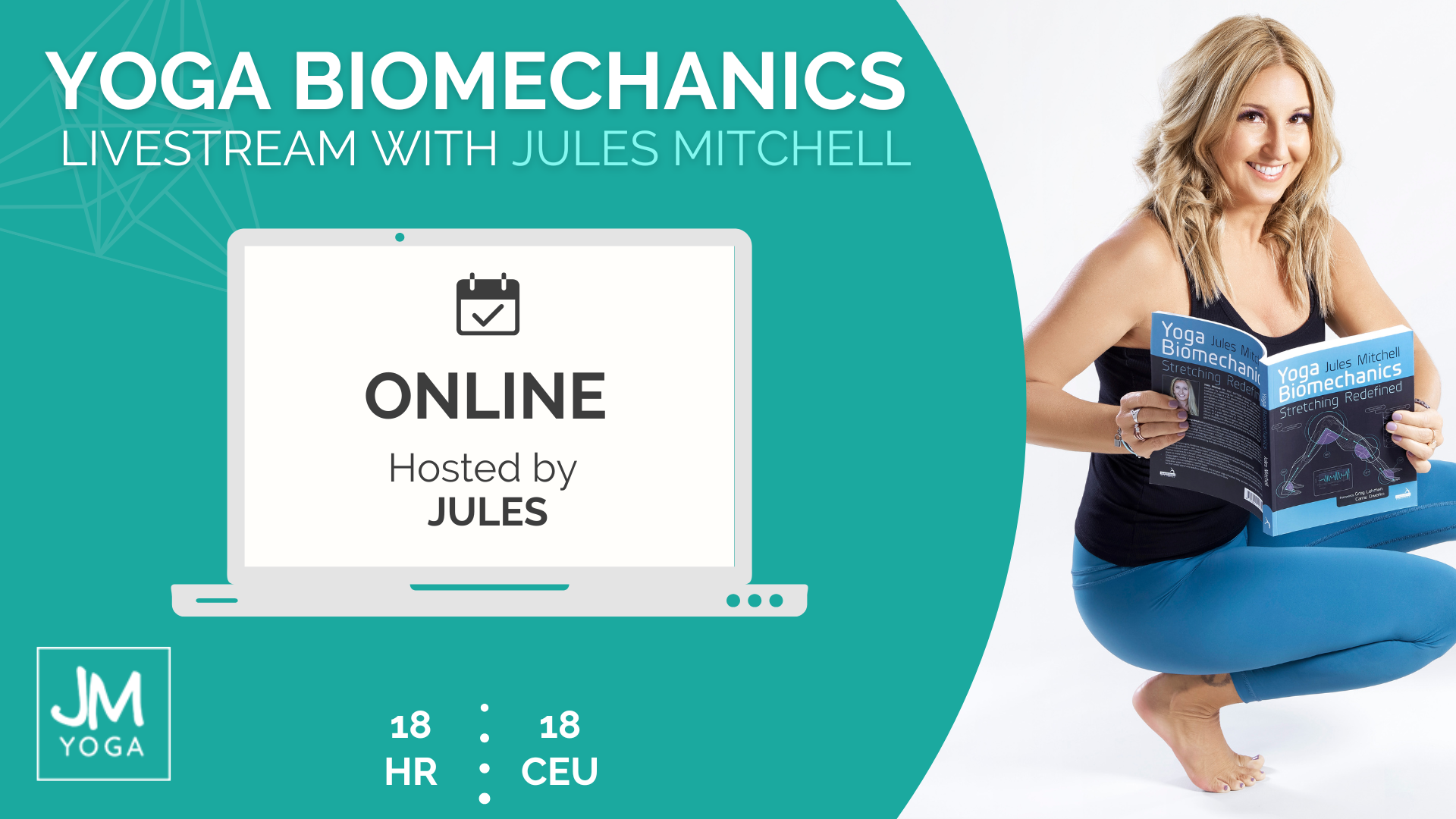Clarifying the Confusion Around Connective Tissue Stretching: A Guide for Yoga Teachers
Are you a yoga teacher in search of a crash course on the stress-strain curve of fascia and other connective tissues? Look no further! In this post, I’m sharing with you a 15-minute crash course in connective tissue behavior (i.e. what happens to tendons and ligaments when you “stretch” them). The video was requested by a member of my mentoring program and it turned out to be such a concise and complete description of the stress-strain curve, I figured I’d share it here on my yoga blog and then follow up with a Thought Provoker from Chapter 3 of my yoga biomechanics textbook. You’ll gain insights into how materials behave when subjected to different load parameters, as well as question why colloquial terms like stiffness and flexibility don’t always line with the mechanical terms. My goal is to provide you with a comprehensive overview that serves as both a review and an introduction to my work. So dive right in and take your understanding of my favorite topic that all yoga teachers should study to new heights.
What is Connective Tissue?
The biological fabric we call connective tissue is made up of an extra-cellular matrix (ECM) and cells. Connective tissue binds, supports, connects, separates, weaves, stiffens, loosens, senses, and so much more. The ECM has many components including proteins, carbohydrates, water, enzymes, growth factors, and more. The fibrous protein, collagen, is a main contributor to the mechanical behavior of musculoskeletal connective tissues like tendons, ligaments, joint capsules, and fascia.
What is the Stress-Strain Curve?
The stress-strain curve is a graph that shows the relationship between stress and strain in a material. Stress is defined as the load that is applied per unit area of the material, while strain is defined as the amount of deformation (or length) of a material under a given load. The stress-strain curve can be used to determine the stiffness, ductility, and brittleness of materials. When the stress-strain curve is applied to biological materials (i.e. connective tissue), we call this area of study tissue mechanics.
Why Tissue Mechanics?
When I studied anatomy, I first learned about tendons and ligaments in terms of their location and their jobs (i.e. “tendons connect muscle to bone, ligaments connect bone to bone”). This didn’t help me understand how they adapt during stretching and strengthening activities, how injuries happen, nor their incredible capacity to undergo extremely high loads for long periods of time and still return to their resting state. Once I started studying tissue mechanics, a whole world of curiosity and skepticism opened up for me.
Watch this video for my crash course in the stress-strain curve. Enjoy!
The Thought Provoker
If you’re new to my Thought Provokers, welcome!
My style of educating yoga teachers includes a lot of questions. Sometimes I answer questions with questions – especially when we don’t have clear answers. I believe we learn the most when we can appreciate what we know, what we don’t know, and what we don’t know we don’t know.
Below is a screenshot of the Thought Provoker from Chapter 3 (page 96) on connective tissue behavior in my book, Yoga Biomechanics: Stretching Redefined. What other questions come up for you within the questions I propose?
What’s coming up for you in this Thought Provoker? Are there things you learned that you now wonder about? Comment below and I’ll be sure to answer (maybe with a question 😂).
Extend Your Learning: Online Education With Jules
Yoga Biomechanics Livestream
My flagship 3-day livestream course is for teachers who have an insatiable curiosity about human movement and kinesiology, are eager to know what the research says about yoga, and are open to accepting that alignment rules aren’t always accurate. Includes 30 days of access to the livestream replay and slides. 18 CEUs. Learn more >


